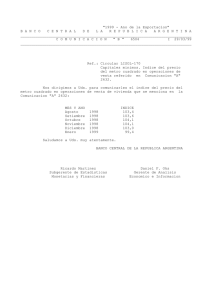TALLER ARREGLOS N-DIMENSIONALES ALGORITMO NOTAS
Anuncio
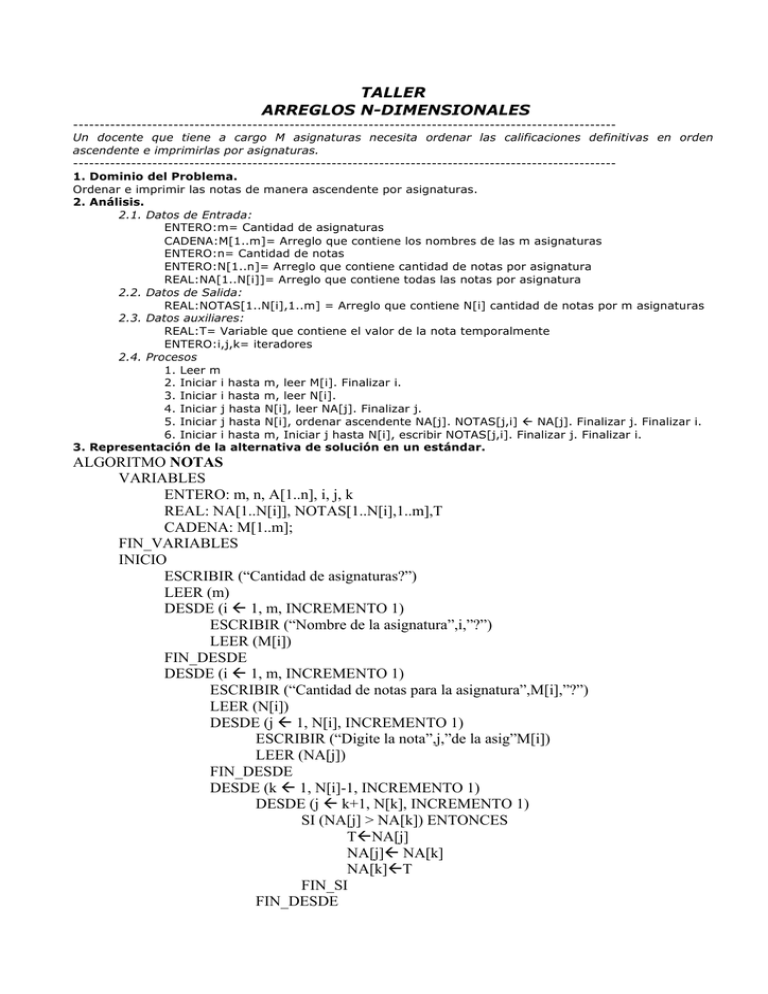
TALLER ARREGLOS N-DIMENSIONALES ------------------------------------------------------------------------------------------------------Un docente que tiene a cargo M asignaturas necesita ordenar las calificaciones definitivas en orden ascendente e imprimirlas por asignaturas. ------------------------------------------------------------------------------------------------------1. Dominio del Problema. Ordenar e imprimir las notas de manera ascendente por asignaturas. 2. Análisis. 2.1. Datos de Entrada: ENTERO:m= Cantidad de asignaturas CADENA:M[1..m]= Arreglo que contiene los nombres de las m asignaturas ENTERO:n= Cantidad de notas ENTERO:N[1..n]= Arreglo que contiene cantidad de notas por asignatura REAL:NA[1..N[i]]= Arreglo que contiene todas las notas por asignatura 2.2. Datos de Salida: REAL:NOTAS[1..N[i],1..m] = Arreglo que contiene N[i] cantidad de notas por m asignaturas 2.3. Datos auxiliares: REAL:T= Variable que contiene el valor de la nota temporalmente ENTERO:i,j,k= iteradores 2.4. Procesos 1. Leer m 2. Iniciar i hasta m, leer M[i]. Finalizar i. 3. Iniciar i hasta m, leer N[i]. 4. Iniciar j hasta N[i], leer NA[j]. Finalizar j. 5. Iniciar j hasta N[i], ordenar ascendente NA[j]. NOTAS[j,i] NA[j]. Finalizar j. Finalizar i. 6. Iniciar i hasta m, Iniciar j hasta N[i], escribir NOTAS[j,i]. Finalizar j. Finalizar i. 3. Representación de la alternativa de solución en un estándar. ALGORITMO NOTAS VARIABLES ENTERO: m, n, A[1..n], i, j, k REAL: NA[1..N[i]], NOTAS[1..N[i],1..m],T CADENA: M[1..m]; FIN_VARIABLES INICIO ESCRIBIR (“Cantidad de asignaturas?”) LEER (m) DESDE (i 1, m, INCREMENTO 1) ESCRIBIR (“Nombre de la asignatura”,i,”?”) LEER (M[i]) FIN_DESDE DESDE (i 1, m, INCREMENTO 1) ESCRIBIR (“Cantidad de notas para la asignatura”,M[i],”?”) LEER (N[i]) DESDE (j 1, N[i], INCREMENTO 1) ESCRIBIR (“Digite la nota”,j,”de la asig”M[i]) LEER (NA[j]) FIN_DESDE DESDE (k 1, N[i]-1, INCREMENTO 1) DESDE (j k+1, N[k], INCREMENTO 1) SI (NA[j] > NA[k]) ENTONCES TNA[j] NA[j] NA[k] NA[k]T FIN_SI FIN_DESDE FIN_DESDE DESDE (j 1, N[i], INCREMENTO 1) NOTAS[j,i]NA[j] FIN_DESDE FIN_DESDE DESDE (i 1, m, INCREMENTO 1) DESDE (j 1, N[i], INCREMENTO 1) ESCRIBIR(“Nota”,j,”:”,NOTAS[j,i]) FIN_DESDE FIN_DESDE FIN_INICIO FIN_ALGORITMO 4. Prueba de escritorio. SOLUCIÓN QUIZ 2 ARREGLOS UNIDIMENSIONALES ------------------------------------------------------------------------------------------------------01. Dado dos arreglos Arreglo1 y Arreglo2 unidimensionales de N elementos cada uno, obtener un arreglo Arreglo3 unidimensional diferente donde su posición i almacene la suma de Arreglo1[i]+Arreglo2[i] y mostrar el mayor elemento del Arreglo3[i] y su posición. ------------------------------------------------------------------------------------------------------1. Dominio del Problema A partir de 2 arreglos unidimensionales obtener un tercero sumando los elementos en la misma posición de los 2 arreglos iniciales y del tercero seleccionar el mayor y su posición. 2. Análisis 2.1. Datos de Entrada: ENTERO: N REAL : Arreglo1[1..N], Arreglo2[1..N] 2.2. Datos de Salida: REAL : mayor ENTERO: mayor_indice 2.3. Datos auxiliares: ENTERO: índice REAL : Arreglo3, suma 2.4. Procesos 1. Leer el tamaño (N) de los arreglos 1 y 2. 2. Leer los datos de los arreglos 1 y 2. 3. Desde i=1 hasta N, sumaarreglo1[i]+arreglo2[i] 4. Arreglo3[i] suma 3. Representación de la alternativa de solución en un estándar. ALGORITMO Arreglos VARIABLE REAL Arreglo1[1..N], Arreglo2[1..N], Arreglo3[1..N] ENTERO índice, mayor_indice, N REAL suma, mayor FIN_VARIABLE INICIO LEER (N) DESDE (indice 1, N, INCREMENTO 1) ESCRIBIR (“Introduce un número para el vector Arreglo1”) LEER (Arreglo1[indice]) ESCRIBIR (“Introduce un número para el vector Arreglo2”) LEER (Arreglo2[indice]) Suma (Arreglo1[indice] + Arreglo2[indice]) Arreglo3[indice] suma FIN_DESDE mayor Arreglo3[1] mayor_indice 1 DESDE (indice 1, N, INCREMENTO 1) SI (Arreglo3[indice] > mayor) ENTONCES mayor_indice indice mayor Arreglo3[indice] FIN_SI FIN_DESDE ESCRIBIR (mayor) ESCRIBIR (mayor_indice) FIN_INICIO FIN_ALGORITMO 4. Prueba de escritorio. i 1 2 3 4 5 Arreglo1 Arreglo2 Arreglo3 60 50 40 20 60 60 50 60 30 80 120 100 100 50 140 suma mayor mayor_indice 120 100 100 50 140 120 120 120 120 140 1 1 1 1 5
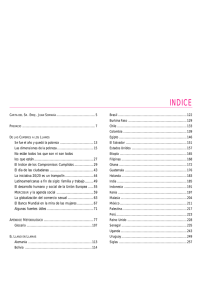
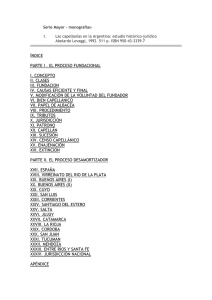
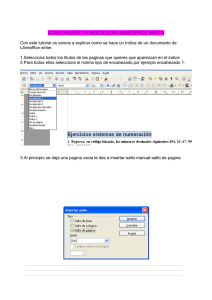
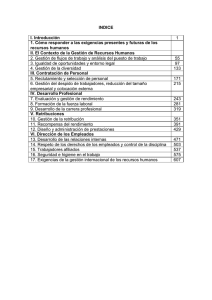
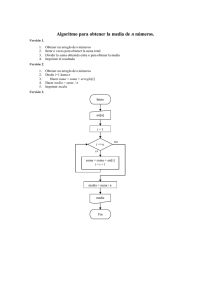

![El Estandar SMETA. Sept 2015 [Modo de compatibilidad]](http://s2.studylib.es/store/data/006319565_1-f22dc41b8f66db71a7967dd41f27cf60-300x300.png)
